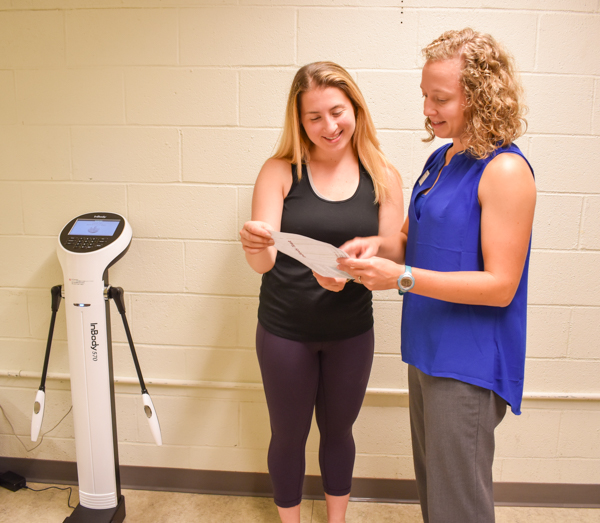
Introduction
In the pursuit of optimal health and fitness, understanding our bodies at a deeper level is crucial. One such method that has gained prominence in recent years is Body Composition Analysis. This revolutionary approach provides valuable insights into our body’s composition, offering a more comprehensive understanding than traditional weight scales. In this article, we will delve into the world of Body Composition Analysis, exploring its significance, benefits, and how it can aid us in achieving our health and fitness goals.
What is Body Composition Analysis?
Body Composition Analysis is a cutting-edge technique that evaluates the different components of our bodies, such as fat, muscle, water, and bone mass. Unlike conventional weight measurements, which simply indicate the overall mass, Body Composition Analysis provides a detailed breakdown of how much of our weight comes from different elements. By understanding these intricate details, individuals can make informed decisions about their lifestyle, diet, and exercise routines.
Importance of Body Composition Analysis
1. Accurate Measurement of Body Fat
Body Composition Analysis enables us to determine the exact percentage of body fat. This information is invaluable, as it goes beyond the numbers on a scale. For instance, two individuals with the same weight may have vastly different body compositions. One might have a higher muscle mass, while the other could be carrying excessive fat, which poses potential health risks. With this knowledge, individuals can tailor their nutrition and exercise plans to achieve a healthier balance.
2. Understanding Muscle Mass
Muscles play a pivotal role in our overall health and well-being. Higher muscle mass can lead to improved metabolism, better postural support, and enhanced athletic performance. Body Composition Analysis helps identify the level of muscle mass in our bodies, allowing us to adopt strategies to preserve or increase muscle mass as needed.
3. Water Content Evaluation
Proper hydration is essential for bodily functions, and Body Composition Analysis can highlight any imbalances in our water content. Whether it’s dehydration or water retention, this analysis aids in maintaining the body’s optimal fluid levels.
4. Assessing Bone Density
As we age, bone health becomes increasingly important. Body Composition Analysis includes an assessment of bone density, which helps identify the risk of osteoporosis or related issues. With this information, necessary steps can be taken to promote bone health and prevent potential fractures.
Methods of Body Composition Analysis
Several methods are used to conduct Body Composition Analysis, each with its own strengths and applications:
1. Dual-Energy X-ray Absorptiometry (DEXA)
DEXA is considered the gold standard for body composition assessment. It employs low-dose X-rays to measure bone mineral density, lean mass, and fat mass accurately. DEXA scans provide highly detailed data, making them ideal for research and clinical settings.
2. Bioelectrical Impedance Analysis (BIA)
BIA is a non-invasive method commonly used in commercial body composition scales. It measures the body’s resistance to a small electrical current, which helps estimate body fat and lean mass. While BIA is convenient and widely accessible, it may not be as accurate as DEXA.
3. Air Displacement Plethysmography (Bod Pod)
Bod Pod measures body volume through air displacement and calculates body composition based on density. It is a quick procedure and does not involve radiation, making it a safe option for many individuals.
4. Skinfold Thickness Measurements
This traditional technique involves using calipers to measure skinfold thickness at various points on the body. The measurements are then used to estimate body fat percentage. Skinfold measurements are simple and cost-effective but may not be as precise as other methods.
Benefits of Body Composition Analysis
1. Personalized Health and Fitness Plans
By understanding their body composition, individuals can tailor their health and fitness plans according to their unique needs. Whether the goal is weight loss, muscle gain, or overall well-being, a personalized approach yields better results.
2. Tracking Progress Effectively
Traditional weight scales do not reveal the changes happening within the body. Body Composition Analysis allows individuals to track changes in body fat, muscle mass, and other components over time, providing a more accurate picture of progress.
3. Identifying Health Risks
An imbalanced body composition can indicate potential health risks. For instance, excess body fat may increase the risk of heart disease and diabetes. Identifying these risks early on enables proactive measures to mitigate them.
4. Optimizing Athletic Performance
Athletes can benefit significantly from Body Composition Analysis. By fine-tuning their body composition, they can enhance their performance in their respective sports and improve their competitive edge.
Conclusion
Body Composition Analysis is a transformative tool that empowers individuals to take charge of their health and well-being. By understanding the intricacies of our body’s composition, we can make informed decisions to improve our lifestyle, fitness routines, and overall quality of life. From accurate body fat measurements to identifying health risks and optimizing athletic performance, the insights gained through Body Composition Analysis are invaluable. Embrace this revolutionary approach to unlock the secrets of your body and embark on a journey towards a healthier, happier you.









